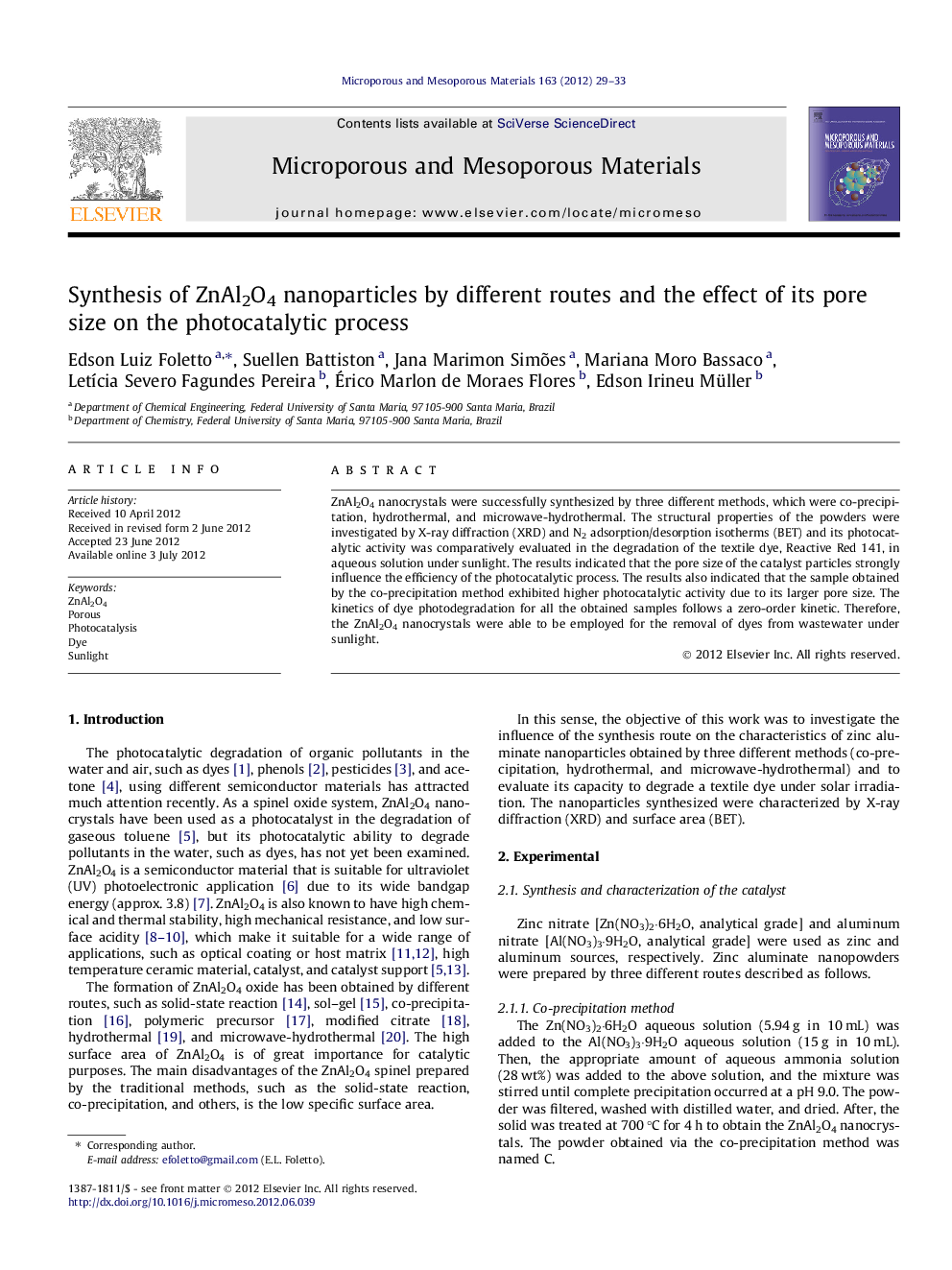| Article ID | Journal | Published Year | Pages | File Type |
|---|---|---|---|---|
| 73970 | Microporous and Mesoporous Materials | 2012 | 5 Pages |
ZnAl2O4 nanocrystals were successfully synthesized by three different methods, which were co-precipitation, hydrothermal, and microwave-hydrothermal. The structural properties of the powders were investigated by X-ray diffraction (XRD) and N2 adsorption/desorption isotherms (BET) and its photocatalytic activity was comparatively evaluated in the degradation of the textile dye, Reactive Red 141, in aqueous solution under sunlight. The results indicated that the pore size of the catalyst particles strongly influence the efficiency of the photocatalytic process. The results also indicated that the sample obtained by the co-precipitation method exhibited higher photocatalytic activity due to its larger pore size. The kinetics of dye photodegradation for all the obtained samples follows a zero-order kinetic. Therefore, the ZnAl2O4 nanocrystals were able to be employed for the removal of dyes from wastewater under sunlight.
Graphical abstractFigure optionsDownload full-size imageDownload as PowerPoint slideHighlights► Pore size of ZnAl2O4 catalyst strongly influenced the photocatalytic efficiency. ► ZnAl2O4 obtained by the co-precipitation method exhibited higher photocatalytic activity. ► The kinetics of dye photodegradation follows a zero-order kinetic.
